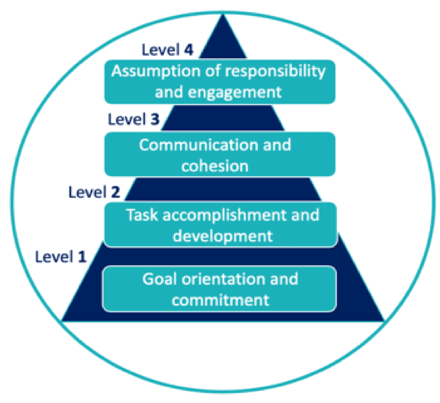Your Organisation’s most Productive, Happy and Profitable Year
Business leaders and government authorities around the world are encouraging or mandating their employees to work from home due to the emerging pandemic caused by COVID-19. Organizations of all sizes are worried about the economic impact the virus will have on their organizational effectiveness and bottom line. I am a Change Management Consultant working with leaders around the world on change initiatives, and in this blog, I focus on the positive impact the situation could have on workplace behaviour.
Transitioning your knowledge working organization from Working from Office (WFO) to Working from Home (WFH) does not have to affect the delivery or timeline of projects. Actually, both behavioral economics research and WFH practioners argue that having employees WFH can increase your team’s overall productivity, work satisfaction and therefore profit, if managed appropriately.
In this blog post, you will find examples of researchers who have shown that WFH produces positive results, as well as advice from executives who are successfully managing WFH teams.
WFH can increase your team’s overall productivity, work satisfaction and therefore profit, if managed appropriately
Behavioural economists have found statistically significant results encouraging you and your team to WFH
Take the Chinese company CTRIP as data point #1. In 2015, the company transitioned a select group of employees from WFO to WFH as part of a randomised experiment run by Nicholas Bloom, Economics Professor at Stanford University. After 9 months, WFH employees experienced a 13% increase in productivity, reported higher levels of work satisfaction, and exhibited 50% lower levels of attrition than their WFO counterparts. This equated to an additional $2000 profit per employee and an increase in total factor productivity of 20 to 30%. Seeing these results, management at CTRIP offered all their employees the option to WFH, which boosted the firm’s productivity by 22%.
And Bloom isn’t the only one to claim amazing benefits by allowing employees to WFH.
- In data point #2, Dutcher (2012) claims that employees are 11% more productive when they work from home rather than work from the office when working on creative tasks.
- In data point #3, Fonner & Roloff (2010) show that employees report higher levels of work satisfaction when working from home, rather than working from the office.
WFH practioners find their teams to be very productive and happy with the current WFH set up
To get more practical insights, I spoke with a set of WFH practioners who have previously managed or are currently successfully managing WFH teams in different types of geographies and types of organisations (large corporations, scale-ups and consulting firms) to understand what is needed to pragmatically arrive at the data points above.
WFH Practitioner #1, Christian Luscher, Head of Commercial Publishing at Tamedia – one of Switzerland’s largest media corporations – leading a WFH team of 25, for 3+ weeks due to COVID-19.
WFH Practitioner #2, Nathan Anderson, CEO and Co-Founder of ScanTrust – an international supply chain digitalisation scale up – leading a WFH team of 37, for 6 years, due to the geography of his founding team.
WFH Practitioner #3, Chris Burns, Head of Kainos Change – a global people and digital transformation consulting firm – leading a WFH team of 7, for 2 years, due to his belief in work life balance.
After speaking to these practioners, I couldn’t help but notice some key themes that linked them together.
Firstly, they all believed in a non-hierarchical way of working, they exemplified inclusivity, and they trusted their employees to get it done. Everyone on their teams is actively leading projects or at least leading on topics they are specialised in and have been given ownership to make important decisions.
Christian: “My team is very happy with our current way of working. And, we are even starting to win projects and tasks from others within our company because we are moving so fast! This is largely because we set up the right processes at the start, and because I don’t try to control behaviour and decisions. I believe each person is competent and can make decisions to keep our pace and move us forward.”
Secondly, they are very strong communicators. Through their answers they could paint the sky, get you relating to them through metaphors and make important details and frameworks crystal clear by drilling down on examples.
Chris: “It’s best not to over complicate what you’re experiencing right now. Keep your communication clean and sharp, make sure your tone of voice is right, and focus on your people”
Thirdly, they are big picture thinkers and confident in charting the way forward. They don’t allow the operational details to distract them from looking into the future, thinking strategically, winning projects and continuing to execute their joint vision and mission.
Nathan: “Resist the urge to firefight. Don’t focus on the fires that are burning now, there will always be fires. Spend the time thinking about what information is important to create in the long term. It’s worth it.”
Did I mention generous?
They were also willing to share with me their hard-won insights, which will be a great benefit for other managers who are currently transitioning into a role of managing a WFH team. I have summarised below the best pieces of advice from each practitioner:
TIPS AND TRICKS
LARGE CORPORATION: CHRISTIAN
- Limit the communication, limit the emails, do not attempt your daily huddle over conference call with 25 + people. It is not efficient. Instead, follow a framework called the Kasseler Team Pyramid. If you can do Level 1 – 3 successfully, level 4 falls into place and you’re moving!
- Level 1 is commitment and goals. For Christian, that means setting up key deadlines or how many sales his team wants to make a day.
- Level 2 is ensuring the workflow is clear. For Christian, that means everyone knows the project plan or the team knows when to brief the freelancers.
- Level 3 is communication. For example, how can the team give proper feedback while working remotely. On Christian’s team, there is no room for only criticism. They all approach feedback by saying what they worked on, what they want to do better in the future, and by showing appreciation to everyone involved. They show empathy and keep moving to accomplish the task.
- Christian also invested in 2 tools: Monday.com and Toggle
- Monday.com has been a life saviour. Monday is a project management tool that organises communication and workflow. It’s intuitive, 5-10 mins and people know how it works, and as a project manager he can manage 5 teams at the same time.
- Toggle helps his team manage their time. This means you can easily tell your manager where your team is spending their time, what your team is doing well and how to improve in the following week.
SCALE UP: NATHAN
- Remote work can sometimes get transactional, make sure you actively build in those water cooler moments where people can connect on a deeper level. For example, his team sometimes plays online games for 5 mins or organises company offsites once a quarter.
- He equates remote work to a marriage: you need to continuously put intentional effort into making it work in the long term. Your team is constantly changing, in size and composition, but more importantly the team members themselves grow and evolve over time. Because of this, team dynamics inevitable change while working remotely and these changes can intensify problems and create real conflict if you cannot find out how to grow together, while apart.
- Set up your SOP’s (standard operating procedures) and direct people to them if they have questions. Outside of that you need 4 major tools: chat (they use slack), conferencing (they use zoom), file sharing (they use google drive) and project management (they use Trello).
CONSULTING: CHRIS
- Your soft skills are essential now. Make sure you build in the time to develop those solid strong relationships with every interaction. It doesn’t always have to be about business. Taking 5mins at the beginning of a call to discover each other better and leave that last point off the agenda is impactful.
- Make sure your people aren’t feeling lonely or disconnected. Chris says his team is all very self-motivated, so productivity hasn’t come up as an issue. It’s more so making sure people are not feeling a sense of disconnection while they’re all working across borders.
- Make sure you have the right blend of people and personalities on each project and don’t be afraid to bring in new personalities during critical times to move things forward.
Conclusion
We are in unprecedented times with COVID–19, and it is scary. And while we are all dealing with a lot, it is important to know that there is research and WFH practioners saying this mandated working from home time has the potential to bring you and your team one of its most productive and happy years, if managed appropriately.
If you are looking for more data or are interested in this topic, please do not hesitate to reach out to me via Linkedin DM or email: [email protected]. As a Remote Change Management Consultant and Freelance Writer, I am in the business of helping organisations and people prosper during times of change and I am devoted to serving my clients however best I can.
Stay inside and take care of yourselves and your teammates.
#remotework #homeoffice #workfromhome #changemanagement #transition #WFH #productivity #employeesatisfaction #profit #organisationalpsychology #coronavirus #management #positivity
Aneta Kosinska is a Polish – Canadian, MSc + CEMS MIM alumni. With management consulting, analytics and startup/entrepreneurial experience, she aspires to contribute to the knowledge sharing economy.
Image: Youtube, Aneta Kosinska


2 replies on “Working from Home”
This is great, Aneta. Really appreciated the perspective.
Thank you for taking the time to read it John, your expert mind and feedback is very much appreciated by me